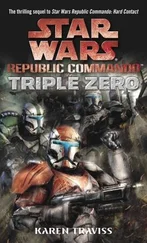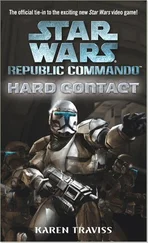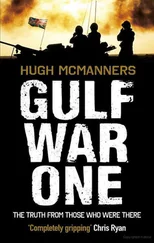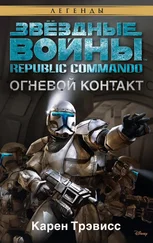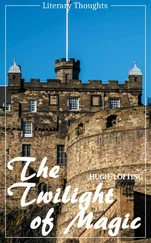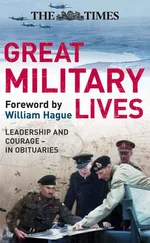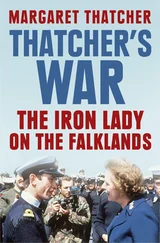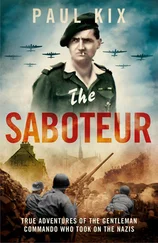Hugh McManners - Falklands Commando
Здесь есть возможность читать онлайн «Hugh McManners - Falklands Commando» весь текст электронной книги совершенно бесплатно (целиком полную версию без сокращений). В некоторых случаях можно слушать аудио, скачать через торрент в формате fb2 и присутствует краткое содержание. Город: London, Год выпуска: 2014, ISBN: 2014, Издательство: Nightstrike Publishing, Жанр: nonf_military, Биографии и Мемуары, на английском языке. Описание произведения, (предисловие) а так же отзывы посетителей доступны на портале библиотеки ЛибКат.
- Название:Falklands Commando
- Автор:
- Издательство:Nightstrike Publishing
- Жанр:
- Год:2014
- Город:London
- ISBN:978-0-992-81540-0
- Рейтинг книги:4 / 5. Голосов: 1
-
Избранное:Добавить в избранное
- Отзывы:
-
Ваша оценка:
- 80
- 1
- 2
- 3
- 4
- 5
Falklands Commando: краткое содержание, описание и аннотация
Предлагаем к чтению аннотацию, описание, краткое содержание или предисловие (зависит от того, что написал сам автор книги «Falklands Commando»). Если вы не нашли необходимую информацию о книге — напишите в комментариях, мы постараемся отыскать её.
Falklands Commando — читать онлайн бесплатно полную книгу (весь текст) целиком
Ниже представлен текст книги, разбитый по страницам. Система сохранения места последней прочитанной страницы, позволяет с удобством читать онлайн бесплатно книгу «Falklands Commando», без необходимости каждый раз заново искать на чём Вы остановились. Поставьте закладку, и сможете в любой момент перейти на страницу, на которой закончили чтение.
Интервал:
Закладка:
For the first time we were looking at the place we’d come all this way to recapture.
I was very surprised at what I saw. All the streetlights were switched on, tiny stars of normality burning brightly as if none of this was really happening. The town’s layout was revealed, showing the grid of streets, the blocks of houses and the line of the road along the edge of Stanley Harbour. In that bitterly cold night, the air was so clear that the lights seemed to be very close indeed.
To the right of the beaded necklace of the town, the shape of Sapper Hill loomed large with a saddle to the right leading up to Mount William and Tumbledown. The outline of Cortley Hill and Wireless Ridge occupied the foreground, and the bends in the Murrell River glinted greasily in the pale moonlight. In the very far distance I could see the silhouette of Mount Kent (to the far right) where the rest of the brigade were getting ready for the final push.
Beagle Ridge Observation Point Map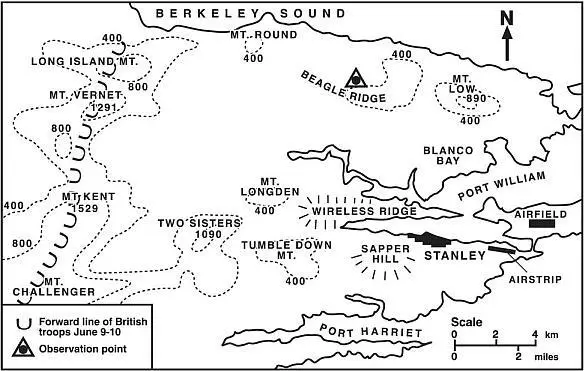
But far less picturesquely, less than a kilometre in front of us, were the tiny flickering lights of Argentine fires, around which, no doubt, shivering sentries were warming their hands and trying to dry out chilled feet. To our right on Wireless Ridge, and below us on the northern slopes of our ridge, were hundreds of enemy soldiers. The nightscope and Swiftscope revealed countless additional fires all over the hills in front and behind us, like tiny glow worms in the darkness.
I wanted to be absolutely sure of the ground before I started shelling near the town. The streetlights would be an invaluable aid, but I needed to confirm their location and numbers in daylight before using them as markers at night. The Argies might be leaving sectors turned off to confuse us. I also expected that once the shells started coming down they would turn off all the lights – at least I would if I were in their shoes. Even firing well away from the town would involve a risk, as the first round of a naval shoot can go anywhere.
We had a gunship actually on the gunline waiting to fire should we need it. (This term gunline dates from when ships lined up to bombard a besieged port and then sailed back out to the fleet to get more powder and shot – a fairly similar situation to ours). I decided that, given the limitations of the gunnery system and the very sketchy information I’d gleaned from my map and air photos, the intelligence briefs and chatting to the SAS patrol, that I wouldn’t fire that night. Once I was happy we were not going to need the ship for our own protection I released her from the gunline, to transit back to the safety of the fleet much further to the north-east.
Nick Allin and I manned the OP during the day, while Des, Steve and Tim provided our rear protection. They set about digging themselves into the turf at the base of the rock outcrop to the north, behind us, and Nick and I set about digging into our rock cleft. We were able to suspend a poncho at an angle over the lower bit of the cleft to keep the rain off. We put a camouflage net and some turf over the top, to blend in with the surrounding outcrops. The cleft was about 9 feet long and between 2 and 3 feet wide with a 30-degree slope to it, which caused us to slide down in our sleeping bags as we slept. We wedged the bergens into the holes in the sides, into which the wind whistled, and carefully arranged our webbing and weapons so that they were close to hand. I put my pistol on the ledge close to our heads.
Nick and I took it in turns to observe, the other sleeping or making brews in the shelter while the observer sat out in the open behind the rock parapet, with binoculars, Swiftscope and nightscope, several maps, the town plans and some photos of the main buildings. The HF radio, with its aerial bent backwards to as not to stick up over the silhouette of the skyline, sat on a rock ledge with its telephone handset and morse key. Our spare water bottles were kept handy to make brews and fill from a brackish puddle that Des had found further along the ridge. (It was very necessary to filter and sterilise this water, as I discovered to my cost later).
It was just possible, in the lower shelter part of the OP, to snuggle both in together – although one person had to sleep on his hip while the other was on his back. There was one strategically misplaced rock in my bit, part of the monolith and too large to remove. I could not stretch out fully, or lie flat. We did not cook at all during the night, but I did smoke the odd cigar under the cover of the poncho – fumigating Nick, who did not smoke. Map reading, radio tuning, etc., was done using a carefully shielded and much dimmed torch. A red lens completely covered by black masking tape with a single very small pinhole to allow only the faintest glow of light to show.
We were just on the forward slope of Beagle Ridge, which meant we could not move at all from the OP during the day. Because of the Argentine positions to our rear (on Mt Round and Hill 500 – just 1km away), Steve, Des and Tim could not move either. They took it in turns to keep watch and came over to see us at night. They had to dig what can only be described as shallow graves, with a hole at one end from which they could observe. The sharpest wind came from the north so they were permanently chilled. They could not, however, be seen, even in daylight, by someone standing a few feet away. Their discomfort was all the worse for the utter boredom of having nothing to do but keep watch during the long, cold days.
As it got light we came carefully out of our shelters to check that our camouflage looked all right and make a few additions and adjustments before the growing light of dawn made it too dangerous. The early morning was the best time for surveillance. The morning sun was soft and the air was clear. As outdoor photographers know, the quality of light is best in the morning or evening. The sun, coming up over our left shoulders, but still low in the sky, cast shadows that sharpened the outlines of the landscape.
Just after first light was also a time of activity in the Argentine positions. Figures would emerge from the rocks and gullies, some walking across open ground carrying their mess tins, going for breakfast. Groups of grey-clad figures would stand in circles with hands in their pockets stamping feet and slapping sides to get warm after a night in a cold sleeping bag.
On that first morning, 10 June, a light helicopter took off from the main Argie HLS (Helicopter Landing Site) in Stanley and flew in a methodical manner along the northern shore of the Murrell River, up all the creeks and then onto Beagle Ridge using Turner’s Stream for cover. The aircraft was two hundred metres too far west to actually fly over the top of us, and went north toward Mount Round. He then clattered along the coast (presumably searching for any signs of landings having been made during the night) then, after a look at Mount Low, returned to Port Stanley.
Nick and I spent the morning matching the information we had with what we could see on the ground. We also needed to know exactly what ground we couldn’t see, so that when at night we heard shells explode but saw nothing, we’d know where they might have gone. Called ‘dead ground’, this is what the observer cannot see because of the folds, valleys and hills. When setting up in a new observation position, the first thing you do is ensure that you’ve identified all the dead ground in your sector. You then work out a strategy for not losing shells into dead ground, so that everything falls onto real estate that you are certain can observe.
This is particularly important with naval gunfire, as the movements of the ship make the accuracy of the first round of a fire mission highly questionable, to the extent that it’s nicknamed ‘the navigators round’. Once the fall of shot has been spotted and an appropriate correction made, the naval gunnery system is extremely accurate.
Читать дальшеИнтервал:
Закладка:
Похожие книги на «Falklands Commando»
Представляем Вашему вниманию похожие книги на «Falklands Commando» списком для выбора. Мы отобрали схожую по названию и смыслу литературу в надежде предоставить читателям больше вариантов отыскать новые, интересные, ещё непрочитанные произведения.
Обсуждение, отзывы о книге «Falklands Commando» и просто собственные мнения читателей. Оставьте ваши комментарии, напишите, что Вы думаете о произведении, его смысле или главных героях. Укажите что конкретно понравилось, а что нет, и почему Вы так считаете.

